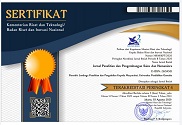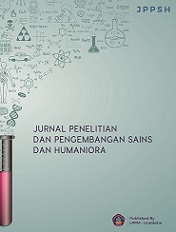The Strategy for Development of Heritage Tourism in Singaraja City
DOI:
https://doi.org/10.23887/jppsh.v7i1.59629Keywords:
Tourism, Planning, Heritage Tourism, Strategy, Singaraja, BaliAbstract
Tourism potentials have not been fully developed to help increase Buleleng Regency's PAD. Each location must have different strategy tailored to the tourism object manager's strengths, weaknesses, aspirations, and targets. This study aimed to formulate strategy for developing Singaraja city in Bali as a heritage tourism. Data were collected using observation, documentation, and FGD techniques and then analyzed qualitatively. This research found that Singaraja city in the north of Bali has many historical assets of the Buleleng kingdom and buildings during the Dutch colonial period. However, the development of Singaraja city as a heritage destination is challenging. The local government has strong eagerness to introduce these assets into heritage tourism to increase the number of tourists visiting Singaraja city. From this analysis, the tourism development strategies for Singaraja City are: (1) form a professional DMO (Destination Management Organization); (2) the involvement of all tourism stakeholders is vital for the development of the city of Singaraja as an heritage tourism destination; (4) the addition of tourist attractions and facilities to be a priority in the development of heritage tourism in the city of Singaraja; (5) a creative team should be formed immediately to promote the city of Singaraja as an heritage tourist destination.
References
Ahyuni, A., & Sri, M. (2015). Minat Wisatawan Asing Berkunjung ke Objek Wisata di Wilayah Bagian Selatan Propinsi Sumatera Barat. Jurnal Geografi, 4(2), 200–212. http://repository.unp.ac.id/16027.
Anggraini, D., & Kumala, V. (2021). Analisis Pengembangan Objek Wisata Untuk Meningkatkan Kunjungan Wisatawan Pada Taman Margasatwa dan Budaya Kinantan Kota Bukittinggi Provinsi Sumatera Barat. Ensiklopedia Social Review, 3(1), 97–101. https://doi.org/10.33559/esr.v3i1.762.
Anya Chapman, D. L. & S. R. (2020). Heritage attractions, competitive pressures and adaptation: the case of the British seaside pier. Journal of Heritage Tourism, 16(5), 533–545. https://doi.org/10.1080/1743873X.2020.1806288.
Arida, N. S., & Adikampana, M. (2016). Pengembangan Potensi Wisata Purbakala (Heritage Tourism) Berbasis Masyarakat Di Das Pakerisan, Kecamatan Tampaksiring, Kabupaten Gianyar. Analisis Pariwisata, 16(1), 9–15. https://ojs.unud.ac.id/index.php/jap/article/download/36364/21955.
Astiti, N. K. A. (2018). Optimalisasi Pengelolaan Pelabuhan-Pelabuhan Kuno Di Buleleng Dalam Pengembangan Pariwisata. Forum Arkeologi, 31(7), 75. https://doi.org/10.24832/fa.v31i1.516.
Barbieri, L., Bruno, F., & Muzzupappa, M. (2017). Virtual museum system evaluation through user studies. Journal of Cultural Heritage, 26, 101–108. https://doi.org/10.1016/j.culher.2017.02.005.
Cuomo, M. T., Tortora, D., Foroudi, P., Giordano, A., Festa, G., & Metallo, G. (2021). Digital transformation and tourist experience co-design: Big social data for planning cultural tourism. Technological Forecasting and Social Change, 162, 120345. https://doi.org/10.1016/j.techfore.2020.120345.
Engelenhoven, G. (2021). From Indigenous customary law to diasporic cultural heritage: reappropriations of adat throughout the history of moluccan postcolonial migration. International Journal for the Semiotics of Law, 34(3), 695–721. https://doi.org/10.1007/s11196-020-09781-y.
Ernawati, H., Avenzora, R., & Damiasih, D. (2018). Kepuasan Wisatawan Terhadap Situs Warisan Budaya Candi Prambanan. Jurnal Ecodemica Jurnal Ekonomi Manajemen Dan Bisnis, 2(2). https://ejournal.bsi.ac.id/ejurnal/index.php/ecodemica/article/view/4493.
Hakim, L. M. (2018). Batik Sebagai Warisan Budaya Bangsa. Journal of International Studies, 1(1). https://jurnal.amikom.ac.id/index.php/nsjis/article/view/90.
Hashed, A. A., & Almaqtari, F. A. (2021). The Impact of Corporate Governance Mechanisms and IFRS on Earning Management in Saudi Arabia. Accounting, 7(1), 207–224. https://doi.org/10.5267/j.ac.2020.9.015.
Jalilifar, A., & Moradi, Y. (2019). Tourism Discourse Revisited: an Analysis of Evaluative Strategies in Tourist Brochures From a Systemic Functional Linguistics Perspective. Journal of English Studies, 17, 211–232. https://doi.org/10.18172/jes.3595.
Kurniawan, A., & Arthana, I. N. N. (2018). Preservasi dan Konservasi Fasade Bangunan Kolonial di Jalur Belanda Kota Singaraja Bali untuk Pelestarian Kawasan Kota Lama. Undagi: Jurnal Ilmiah Jurusan Arsitektur Universitas Warmadewa, 6(2), 90–96. https://doi.org/10.22225/undagi.6.2.1021.90-96.
Kurniawan, A., Arthana, N. N., & Rahadiani, A. S. (2022). The Concept of Conservation of Colonial Buildings on the Dutch Route to Singaraja, the Heritage City. In WICSTH 2021: Proceedings of the 1st Warmadewa International Conference on Science, Technology and Humanity, WICSTH, 40. https://books.google.com/books?hl=id&lr=&id=Ap59EAAAQBAJ&oi.
Laksana, I. K. A. B., Kardinal, N. G. D. A., & Wirawan, K. (2017). Pusaka Budaya Di Kelurahan Kampung Baru Sebagai Daya Tarik Wisata Di Kota Singaraja. Program Studi Perencanaan Wilayah Dan Kota, 125. https://www.academia.edu/download/93805558/Tantangan_20Pengembangan.
Leung, D., Dickinger, A., & L., N. (2017). Impact of Destination Promotion Videos on Perceived Destination Image and Booking Intention Change. In Information and Communication Technologies in Tourism, 361–375. https://doi.org/10.1007/978-3-319-51168-9_26.
Loaiza Carvajal, D. A., Morita, M. M., & Bilmes, G. M. (2020). Virtual museums. Captured reality and 3D modeling. Journal of Cultural Heritage, 45, 234–239. https://doi.org/10.1016/j.culher.2020.04.013.
Madyukova, S. А. (2021). Socio-Cultural Space of the City: Ethno-Sociological Focus of Research. Siberian Journal of Philosophy, 19(2). https://doi.org/10.25205/2541-7517-2021-19-2-117-135.
Mohammed, N. F., Ahmed, K., & Ji, X. D. (2017). Accounting Conservatism, Corporate Governance and Political Connections. Asian Review of Accounting, 25(2), 288–318. https://doi.org/10.1108/ARA-04-2016-0041.
Murti, D. C. W. (2019). Performing rural heritage for nation branding: a comparative study of Japan and Indonesia. Journal of Heritage Tourism, 15(2). https://doi.org/10.1080/1743873X.2019.1617720.
Neuhofer, B., & Buhalis, D. (2012). Understanding and managing technology-enabled enhanced tourist experiences. Paper Presented at The 2nd Advances in Hospitality and Tourism Marketing & Management. https://www.academia.edu/1257765/Neuhofer_B_and_Buhalis_D_2012.
Ott, M., & Pozzi, F. (2008). ICT and cultural heritage education: Which added value? In Emerging Technologies and Information Systems for the Knowledge Society: First World Summit on the Knowledge Society, 131–138. https://link.springer.com/chapter/10.1007/978-3-540-87781-3_15.
Owsianowska, S. (2011). Tourism promotion, discourse and identity. Folia Turistica, 25(1), 231–248. https://www.researchgate.net/profile/sabina_owsianowska/publication/336142599.
Pajriah, S. (2018). Peran Sumber Daya Manusia Dalam Pengembangan Pariwisata Budaya Di Kabupaten Ciamis. Jurnal Artefak, 5(1), 25. https://doi.org/10.25157/ja.v5i1.1913.
Parma, I. P. G., Mahardika, A. N. Y. M., Armawan, I. K., & Novia, P. Y. S. (2021). The Strategy of Developing Historical Tourism in the City of Singaraja Based on CHSE During the Covid-19 Pandemic. In 6th International Conference on Tourism, Economics, Accounting, Management, and Social Science (TEAMS 2021), 34–42. https://doi.org/10.2991/aebmr.k.211124.006.
Pennington, J. W., & Thomsen, R. C. (2010). A semiotic model of destination representations applied to cultural and heritage tourism marketing. Scandinavian Journal of Hospitality and Tourism, 10(1), 33–53. https://doi.org/10.1080/15022250903561895.
Perdana, A. (2020). Representasi Warisan Karaeng Pattingalloang Di Museum. Jurnal Pangadereng: Jurnal Hasil Penelitian Ilmu Sosial Dan Humaniora, 6(01), 57–72. https://doi.org/https://doi.org/10.36869/pjhpish.v6i1.137.
Rahmawati, P. I., & Arsudipta, K. (2022). Strategi Pengembangan Dan Tata Kelola Kepariwisataan Kota Singaraja. Saraswati Jurnal Kelitbangan Kabupaten Buleleng, 1(2), 19–33. http://ejurnal.bulelengkab.go.id/index.php/saraswati/article/view/16.
Risteskia, M., Kocevskia, J., & Arnaudov, K. (2012). Spatial planning and sustainable tourism as basis for developing competitive tourist destinations. Procedia-Social and Behavioral Sciences, 44, 375–386. https://doi.org/10.1016/j.sbspro.2012.05.042.
Shafiee, M. M., Tabaeeian, R. A., & Tavakoli, H. (2016). The effect of destination image on tourist satisfaction, intention to revisit and wom: an empirical research in foursquare social media. In 2016 10th International Conference on E-Commerce in Developing Countries: With Focus on e-Tourism (ECDC), 1–8. https://doi.org/10.1109/ECDC.2016.7492964.
Styliani, S., Fotis, L., Kostas, K., & Petros, P. (2009). Virtual museums, a survey and some issues for consideration. Journal of Cultural Heritage, 10(4), 520–528. https://doi.org/10.1016/j.culher.2009.03.003.
Sylvia, R. (2017). Analisis Strategi Pengembangan Obyek Wisata Air Terjun Tumpang Dua di Kabupaten Kotabaru Kalimantan Selatan. Jurnal Ekonomi Dan Manajemen, 11(2), 253–259. https://journals.umkt.ac.id/index.php/JEM/article/view/35
Wirawan, I. N. S., Eka, P., Suwi, A. A., Tanjungsari, K. ., Semara, I. M. T., Lemy, D. M., & Pujiastuti, S. N. (2020). “Green village destination” development strategy based on ecgo bike in Pelaga district petang Badung Bali Indonesia. Systematic Reviews in Pharmacy, 11(12), 259–266. https://doi.org/10.31838/srp.2020.12.42.
Yuniar, A. I. S., Putra, G. A. P., Purwati, N. E., Hayatunnufus, U., & Nufi’ah, U. (2021). HITARI ( Historical-archaeology Heritage Riddle ): Pemanfaatan wordwall sebagai media ajar Indonesia zaman prasejarah di Sekolah Menengah Atas. Jurnal Integrasi Dan Harmoni Inovatif Ilmu-Ilmu Sosial, 1(11), 1182–1190. https://doi.org/10.17977/um063v1i112021p1182-1190.
Downloads
Published
Issue
Section
License
Copyright (c) 2023 Putu Indah Rahmawati

This work is licensed under a Creative Commons Attribution-ShareAlike 4.0 International License.
Authors who publish with the Jurnal Penelitian dan Pengembangan Sains dan Humaniora agree to the following terms:
- Authors retain copyright and grant the journal the right of first publication with the work simultaneously licensed under a Creative Commons Attribution License (CC BY-SA 4.0) that allows others to share the work with an acknowledgment of the work's authorship and initial publication in this journal.
- Authors are able to enter into separate, additional contractual arrangements for the non-exclusive distribution of the journal's published version of the work (e.g., post it to an institutional repository or publish it in a book), with an acknowledgment of its initial publication in this journal.
- Authors are permitted and encouraged to post their work online (e.g., in institutional repositories or on their website) prior to and during the submission process, as it can lead to productive exchanges, as well as earlier and greater citation of published work. (See The Effect of Open Access)









